Poison ivy infection also known as allergic contact dermatitis, affects half of the population in the United States. It is characterized as sensitivity to irritants that are found in poison ivy, poison oak and poison sumac. Urushiol, an oily resin found in these plants can cause bothersome symptoms.
People with sensitivity to urushiol can develop itchiness, blisters and rashes after being exposed to these plants. When you are outdoors, try to avoid these type of plants because even dead plants of this kind may still irritate a person.
Normally, poison ivy infection is not serious though, it is still recommended if people will just avoid this type of plants to avoid irritation. Try to be on look out of these plants when you plan to go hiking or staying outside.
Poison ivy may appear different from each region, though, it generally grows in vines and shrubs. The leaves are often grouped of three, five or seven while poison sumac are characterized as smooth, oval shaped and have cluster of seven to thirteen leaves.
What are the Symptoms of Poison Ivy Infection?
Symptoms of Poison ivy infection may vary according to the degree of sensitivity of a person and depending on the severity of the exposure to the irritant. Studies show that majority of people are sensitive to poison ivy, sumac and oak but 15% of population are more highly sensitive to these plants than the others. Those who are highly sensitive may have poison ivy rashes even after just mild exposure.
Symptoms are not really sudden, usually, it may start to appear after 1-2 days of the exposure. Some of the symptoms of Poison ivy infection are:
- Red patches
- Swelling
- Itchiness
- Blisters that contain fluid
- Rashes may appear in a straight line because that is probably the way the leaves had touched the skin.
- Bumps may appear up to 2-3 weeks.
- Severe poison ivy infection may also affect the eyes and the lungs.
Symptoms of poison ivy infection may not be transferred from one person to another. Likewise, the blister fluid do not also spread the infection to other parts of the body however, scratching should be avoided so as not to irritate further the infection.
What are the Causes of Poison Ivy Infection?
The main cause of poison ivy infection is exposure to the irritating substance from poison ivy, poison oak and sumac. Here are the possible ways for you to have exposure to poison ivy.
- The most common type of exposure to poison ivy is though direct touch. If a person directly touches the stems, leaves, stems and the berries of the plant.
- Urushiol may enter your body through indirect means like your shoes or clothes. The dress that you are wearing may have the presence of urushiol and if it touches your skin, urushiol may be transferred from your shoes and clothes and then to your skin.
- Urushiol on objects may also irritate a person. If you have exposure to a poison ivy, it is highly recommended that you wash your clothes several times to make sure that the irritation chemical is not longer there.
- Urushiol can also stick on pets. If your pets have exposure with poison ivy, you may also develop poison ivy rash by touching the furs of the dogs.
- Smoke from the burned poison may also irritate a person. It is better that you avoid inhaling smoke from poison ivy, poison oak and sumac since urushiol can irritate your lungs and eyes.
What are Poison Ivy Infection Treatments?
Poison ivy infection treatments may vary from the severity of the exposure to the irritant. Most of the time, self-care methods are best used in this type of allergy.
Here are some poison ivy infections self-care methods and treatments.
1. Washing with soap and water
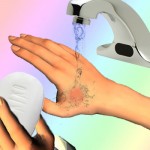 The best self-care method for poison ivy infection is washing the irritated skin with soap and water. However, washing of the skin with poison ivy rash should be done immediately right after the skin was exposed because the resin is hard to remove if you will wash it later.
The best self-care method for poison ivy infection is washing the irritated skin with soap and water. However, washing of the skin with poison ivy rash should be done immediately right after the skin was exposed because the resin is hard to remove if you will wash it later.
2. Topical Creams
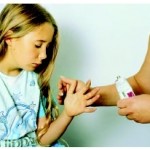 Topical creams are given to lessen the symptoms like itching and soreness. This type of cream should be applied before blisters appear.
Topical creams are given to lessen the symptoms like itching and soreness. This type of cream should be applied before blisters appear.
3. Oral Medications
 Oral medications are given when the blisters are severe, infected and if the infection is widespread to the body.
Oral medications are given when the blisters are severe, infected and if the infection is widespread to the body.
Â
4. Oatmeal bath
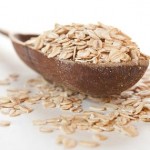 Oatmeal bath is best used to lessen itchiness and may soothe other symptoms associated with poison ivy infection.
Oatmeal bath is best used to lessen itchiness and may soothe other symptoms associated with poison ivy infection.
Â
5. Cool compress
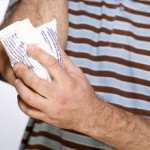 Cool compress can be applied to the area with rash. This will also help in reducing the itchy feeling due to poison ivy.
Cool compress can be applied to the area with rash. This will also help in reducing the itchy feeling due to poison ivy.
These are treatments for poison ivy reaction, however, severe allergic reaction may require urgent medical attention to avoid anaphylactic shock. Go to the nearest emergency room for immediate medical care.
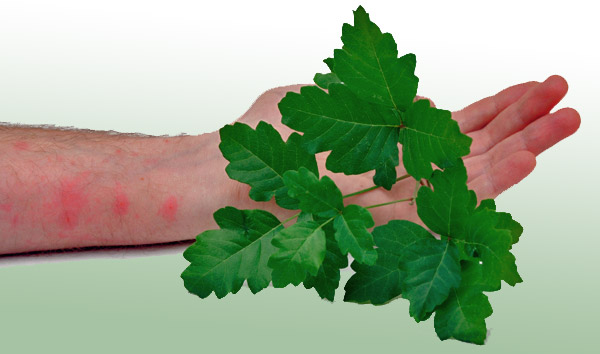
A correction. Urushiol, the allergenic oil in the resin of poison oak and poison ivy does not do its bad stuff by being an irritant. (It has a very slightly irritating effect on the skin that is barely noticeable if a large amount is on the skin). The rash is caused by your own body in an a delayed contact dermatitis (allergic reaction). As the harmless oil is being absorbed into the skin, the immune reaction releases chemicals that are caustic, and cause the clear plasma in your blood to seep into the skin, causing blisters. Chemicals like histamine are released, causing itching and skin damage.
The condition is not an infection, although that can result from scratching.
My credentials: I wrote “The Poison Oak & Poison Ivy Survival Guide.”